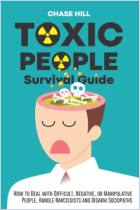Únase a getAbstract para acceder al resumen.

Únase a getAbstract para acceder al resumen.
Jamela Adam
What Is Toxic Positivity and How Is It Bad for Your Workplace?
Positivity is a virtue – but too much of it can be toxic. Here's how toxic positivity creates an unhealthy work environment.
U.S. News, 2023
¿De qué se trata?
Always looking on the bright side has a dark side. Learn to protect your company – and yourself.
Recommendation
Every cloud has a silver lining, right? Though this sentiment is well-meaning, when the corporate culture makes light of serious challenges – or, worse, denies they exist – employee burnout increases and morale plummets. In a brief article for U.S. News & World Report, writer Jamela Adam sheds light on the harm that can result when well-intentioned optimism deteriorates into toxic positivity. Adam offers clues to know when toxic positivity has taken hold and suggests steps that managers and workers can take to combat it.
Summary
About the Author
Jamela Adam is a writer covering personal finance and business topics.























Comment on this summary